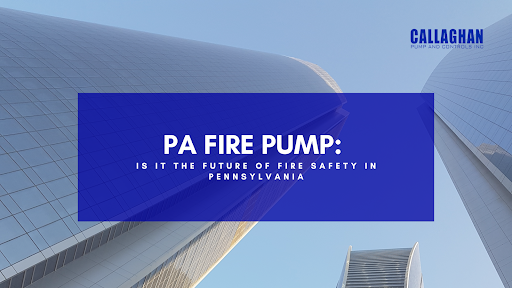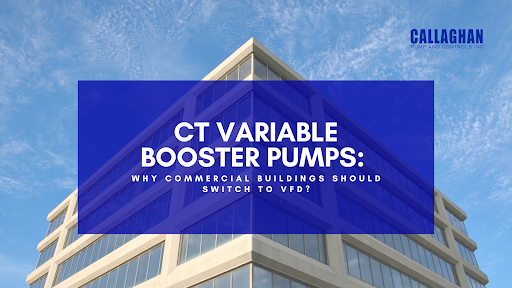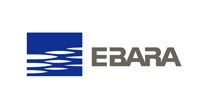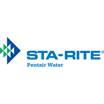It’s true that NYC variable booster pumps have become an innovative solution for modern plumbing needs. They make systems smarter, more reliable, and more efficient. Callaghan Pump has been a trusted distributor of high-performance water pumps across the U.S. for over a decade. Along the way, we have noticed many customers asking similar questions about how these systems work and why they matter.
So, we decided to put all these most frequently asked questions in one place. Scroll down to learn more about NYC water booster pumps and find quick and helpful answers. Understanding NYC Water Booster Pump Systems
-
What is a variable booster pump?
Variable water booster pumps automatically adjust their speed depending on the required pressure. NYC variable booster pumps are integrated with variable frequency drives, which help the system monitor real-time demand. This helps deliver constant pressure while optimizing energy consumption.
-
How does an NYC variable booster pump improve water efficiency?
Since these pumps work according to real-time water demand, enormous energy is preserved. Unlike traditional pumps that constantly work at a similar speed, these pumps smartly adjust the motor rotation. Hence, around 30%-50% of electricity consumption is reduced. This makes these units a smart investment for both operational savings and environmental responsibility.
-
Does a water booster pump use electricity?
Yes, most of the NYC water booster pumps are operated by electricity to push the pressure. Smart pumps, such as VFD-based units, use electricity to adjust the motor speed and monitoring.
-
Where are diesel-powered NYC variable booster pumps used?
Diesel booster pumps are commonly used in areas where electricity is unavailable. Generally, remote or off-grid locations have diesel-based pressure booster pumps. They also serve as functional alternative systems during emergencies, such as fire outbreaks, to keep water flow running when power fails.
Applications and Suitability of NYC Variable Booster Pumps
-
Why are these pumps necessary in NYC?
New York City has vertical architecture, which is its standout feature. It’s common for the state to face lower water pressure and inconsistent supply on the upper floors. Here, variable booster pumps keep the water running with a balanced and ideal supply across every floor. They improve tenant satisfaction by offering smooth, regulated water pressure.
-
Can variable water booster units be installed in old buildings?
Yes, NYC variable booster pumps can easily be fitted into old buildings as long as they comply with local code guidelines and regulations. Here, it’s important to contact a professional fitter and purchase a quality water booster pump from a trusted supplier. These experts have the experience to retrofit VFD systems into existing older infrastructures effectively.
-
Are they suitable for high-rise buildings?
Yes, NYC water booster pumps are specifically designed for high-rise structures. They are deployed where static pressure from the city supply cannot meet the demand. Such flow control systems augment the force of water before it reaches the outlets.
-
Can one system serve both residential and commercial purposes?
Yes, NY variable booster pumps are designed to meet the unique demands of both residential and commercial applications. It allows housing developers to efficiently manage fluctuating water usage and peak demand across varied occupancy types. Whether it’s a multi-family apartment or a commercial high-rise, a well-designed booster device manages water requirements throughout the properties.
Variable Booster Pumps Installation and Technical Integration
-
Can I integrate a water booster pump with a Building Management System (BMS)?
Of course, you can. Modern variable booster pumps in New York support BMS and SCADA integration. With this, units perform real-time monitoring, send fault alerts, and enhance the entire system’s reliability and functionality.
-
How to find the perfect variable water booster pump size?
To make the hydraulic units work without interruption and energy waste, a variable booster pump should be accurately sized. It can be determined based on building height, peak water demand, pipe design, and municipal supply pressure.
-
Should NYC variable booster pumps comply with building regulations?
Since the booster pump installation alters the plumbing system and water supply pipeline, the water booster pump fitting needs to comply locally with the building codes. For that, you require permission from the NYC Department of Buildings.
Reliability and Backup in NY Water Booster Pumps
-
Do pressure booster pumps make noise during operation?
Variable hydraulic booster units are innovatively designed based on VFD systems. Those engines operate softly and have a lower average speed than fixed booster units. This makes them ideal for business towers, residential complexes, and hospitality environments.
-
What if the pump system fails during emergency situations?
Most NYC variable booster pumps feature automatic alternation and have backup capabilities. With intelligent monitoring systems and built-in redundancy, they prevent downtime and manage operations to provide a constant supply to occupants during emergency conditions.
Water Booster Pump Maintenance and Popular Brands in New York
-
Which brand is the best for NYC variable booster pumps?
In NYC, Carver Pump, Aurora, Berkely, Ebara, Pentair, Torna Tech Fire Pump Controller, Liberty Pumps, Hydromatic, Sta-Rite, Gorman-Rupp Pumps, Yaskawa, and AMT Pump Company are some of the trusted water booster pump brands.
-
Is the water booster pump maintenance complex?
Pressure booster pump maintenance is typically straightforward. But it’s important to check with the manufacturer’s guidelines. It is because the criteria may vary depending on the unit design. You can learn a well-planned routine checklist to prevent unplanned shutdowns and minimize long-term costs. Need expert guidance or an experienced NYC variable booster pumps supplier?























